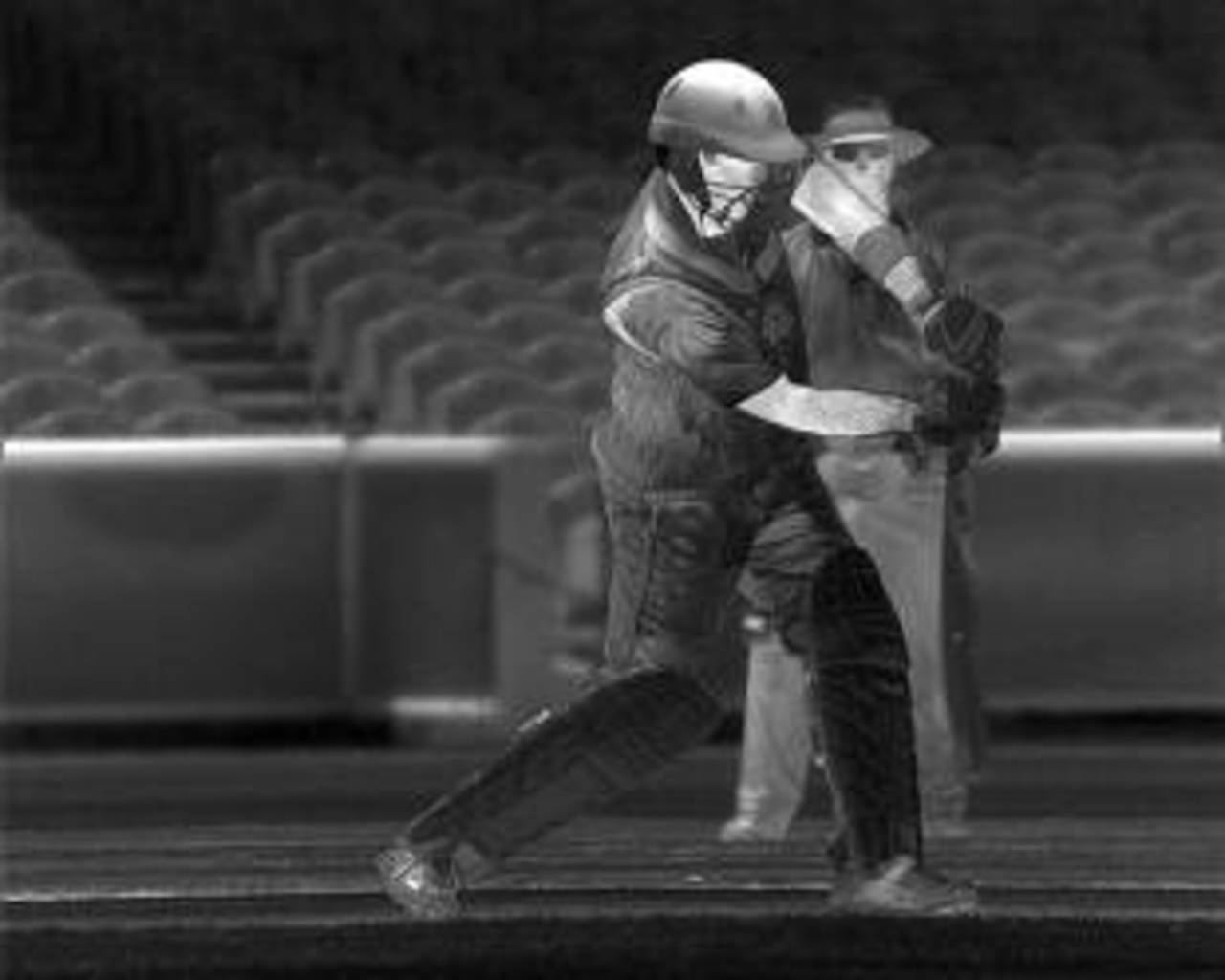Remove protective coating for Hot Spot - Brennan
Hot Spot inventor Warren Brennan has called for protective coatings to be removed from bats in order to achieve the most accurate thermal imaging results
Brydon Coverdale
10-Aug-2013

Warren Brennan's BBG Sports: "The type and thickness of the protective coating unquestionably affects the thermal signature of the Hot Spot system." • HotSpot
Hot Spot inventor Warren Brennan has called for protective coatings to be removed from bats in order to achieve the most accurate thermal imaging results. Brennan has broken his silence on the Hot Spot debate of the past week, releasing a statement that did not mention silicone-tape but said the thermal signatures of cricket bats were "unquestionably" affected by their protective coatings.
A number of edges have failed to show up on Hot Spot during the ongoing Ashes series, leaving the players uncertain of whether to use reviews or not. Following the Old Trafford Test, Channel Nine in Australia reported the ICC was investigating the possibility that players were using silicone-tape on the edges of their bats during this series in a deliberate effort to fool Hot Spot.
However, the ICC dismissed those claims and the captains of both sides rubbished the idea that any of their players would set out to cheat the DRS. Brennan, who had initially declined to comment on the debate, has now released a statement in which he said that his company, BBG Sports, had tested a range of the latest cricket bats over the past week and found that their protective coating can reduce the likelihood of edges showing up on Hot Spot.
"Following the Manchester Test match earlier this week, BBG Sports analysed contentious Hot Spot decisions from the Ashes series and decided to purchase several of the latest generation of cricket bats to undertake thorough testing," the BBG statement said. "BBG Sports observed that the majority of bats had some form of protective coating that would wrap around onto the edges of the bat.
"Strangely enough, this protective coating would cover only half of the edge of the bat and not the entire edge of the bat. BBG Sports believed this could cause the front edge of the bat to have a different thermal signature than the back edge of the bat. BBG Sports' own internal testing over the past three days utilizing the latest generation of cricket bats has, in their opinion, provided conclusive findings.
"The type and thickness of the protective coating unquestionably affects the thermal signature of the Hot Spot system. In layman's terms, the protective coating definitely diminishes Hot Spot marks. BBG Sports advised the ICC earlier this week on these initial findings and has committed to further testing over the coming weeks.
"BBG Sports believes that in order to achieve optimum Hot Spot results the removal of protective coating from bats and edges needs to occur. This will allow for the best thermal signatures between cricket balls and natural timber cricket bats."
However, the ICC is unlikely to enforce any such rules, given that batsmen have been using protective coatings on their bats for many years. Earlier this week, Australia's captain Michael Clarke said that every bat he had owned since he was about 12 had featured a protective layer in order to increase the bat's longevity, and most bats these days incorporate some form of such protection.
The ICC's umpires manager, Simon Taufel, also said earlier this week that for the past three years, Test umpires have carried out random bat inspections roughly 12 times per Test and not once has a batsman been found to have used silicone-tape in an attempt to trick the technology. Taufel said if such tape was found on the edges, a player would be liable for a breach of the Code of Conduct.
Hot Spot was again the centre of attention on the first morning of the Chester-le-Street Test, but this time the system worked as intended. Joe Root was adjudged not out by the on-field umpire Tony Hill but after Australia asked for a review, a faint edge showed up on Hot Spot and the decision was overturned.
Brydon Coverdale is an assistant editor at ESPNcricinfo. He tweets here